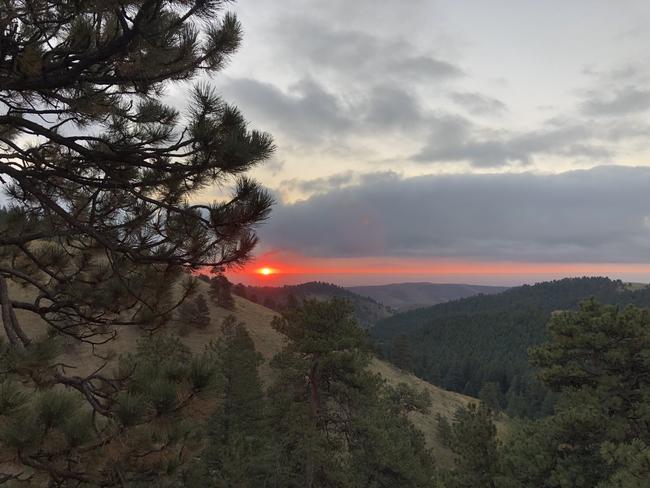About Us
Homes on Lookout Mountain have water supplied by the Lookout Mountain Water District or are dependent on individual wells. Presently the water supplied by the District is some of the best in the state. This was not always so...
Our water history begins in the early 1900s, when the City of Golden was looking for water of better quality than was available from Clear Creek. The city filed for and acquired water rights in 1903 to the headwaters of Beaver Brook on the north slope of Squaw Mountain to satisfy that need. Because the run-off from this tributary of Clear Creek peaks in late spring, it was necessary to build two reservoirs in the upper part of the drainage to provide water storage sufficient for year-round use. A third reservoir for additional storage was built on Lookout Mountain, and a water treatment plant was built at the foot of Lookout Mountain in Golden. In order to obtain the right-of-way for a water line from the lower reservoir on Beaver Brook to the reservoir on Lookout Mountain, the city offered to sell raw water to the landowners who lived along the proposed route. They were free to use the water for irrigation or other purposes.
In the late 1940s and 1950s, the use of land on Lookout Mountain gradually began to change from rural to suburban. Developers bought up the ranches that had rights to taps from Golden and obtained permission to connect to the main line and install lateral water lines into the areas they wanted to subdivide for homes. This water was raw, untreated, and frequently dirty. The City of Golden required individuals who built homes using this water to pay a tap fee and install water meters so that the City could impose a use fee of $1.00 per thousand gallons. Although the original owners understood that the water was untreated, residents moving into the area were often surprised to discover that they were drinking untreated water. The lateral water lines were originally owned by the developers and later by those residents having connections to the laterals. This situation continues to this day with all the laterals, except one.
Appeals to the City of Golden, the County Health Department, and the State Health Department were of little help until 1969, when the County Health Officer, Dr. William Russell, called a meeting of residents to study the situation and to seek a resolution to the problem. By then, there were more than 200 homes served by the raw water. A committee was formed to plan a water district. A plan was drawn up and the voters defeated the formation of a new district in an election held in 1972 largely because of opposition to the new district’s plans to fund the new district by selling new taps, although the supply of water was extremely limited due to the junior 1903 water rights.
Enactment of the Federal Safe Drinking Water Act in late 1974 would have required Golden to construct a new water treatment plant for the raw water being supplied to Lookout Mountain residents. Instead, the City of Golden developed alternate sources of water for the city. During the 1977 drought, a second committee was formed and prepared a new plan that involved acquiring the three reservoirs and the main water pipeline from Golden, constructing a water treatment facility near the base of the lower dam on Beaver Brook (near Floyd Hill), and building a 1,000,000-gallon water storage facility near El Rancho. To ensure a favorable vote, the committee defined the district boundaries to include only those properties that were already being served by the existing water distribution system.
Moreover, all the candidates for the new board of directors for the proposed district stated it was their policy not to encourage new development or to offer new water taps to developers. To obtain service, unconnected but issued taps would still be brought into the boundary of the District in the future. These plans assured a strong vote in favor of the District. However, to reach a final agreement with Golden, the District was forced to agree to issue about 60 restricted taps to allow the development of the Ridges section of Paradise Hills.
An election was held in 1988, and the new Lookout Mountain Water District was approved by the voters. On May 3, 1988, the District’s electors authorized the issuance of $2,500,000 in general obligation bonds for the construction and acquisition of the water system. The District immediately began the job of constructing the water treatment plant, the storage facility at El Rancho, the replacement of thousands of feet of leaky main line pipe, and upgrading the dam and spillway at the Upper Beaver Brook reservoir. Most of this work was completed in the early 1990s. By 1989, the homes within the district were receiving safe and potable water treated in the new facility. Properties not served by the district continue to rely on wells. To date, the district has maintained tight control on the sale of additional taps and currently has about 25 inactive taps and 530 active taps.

